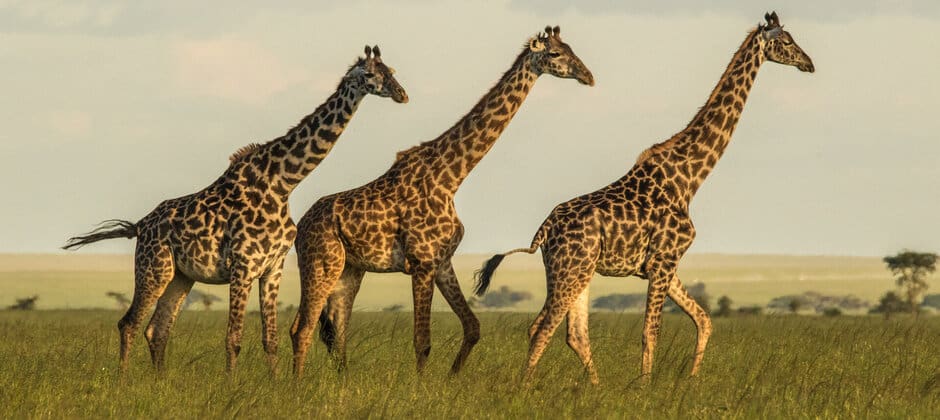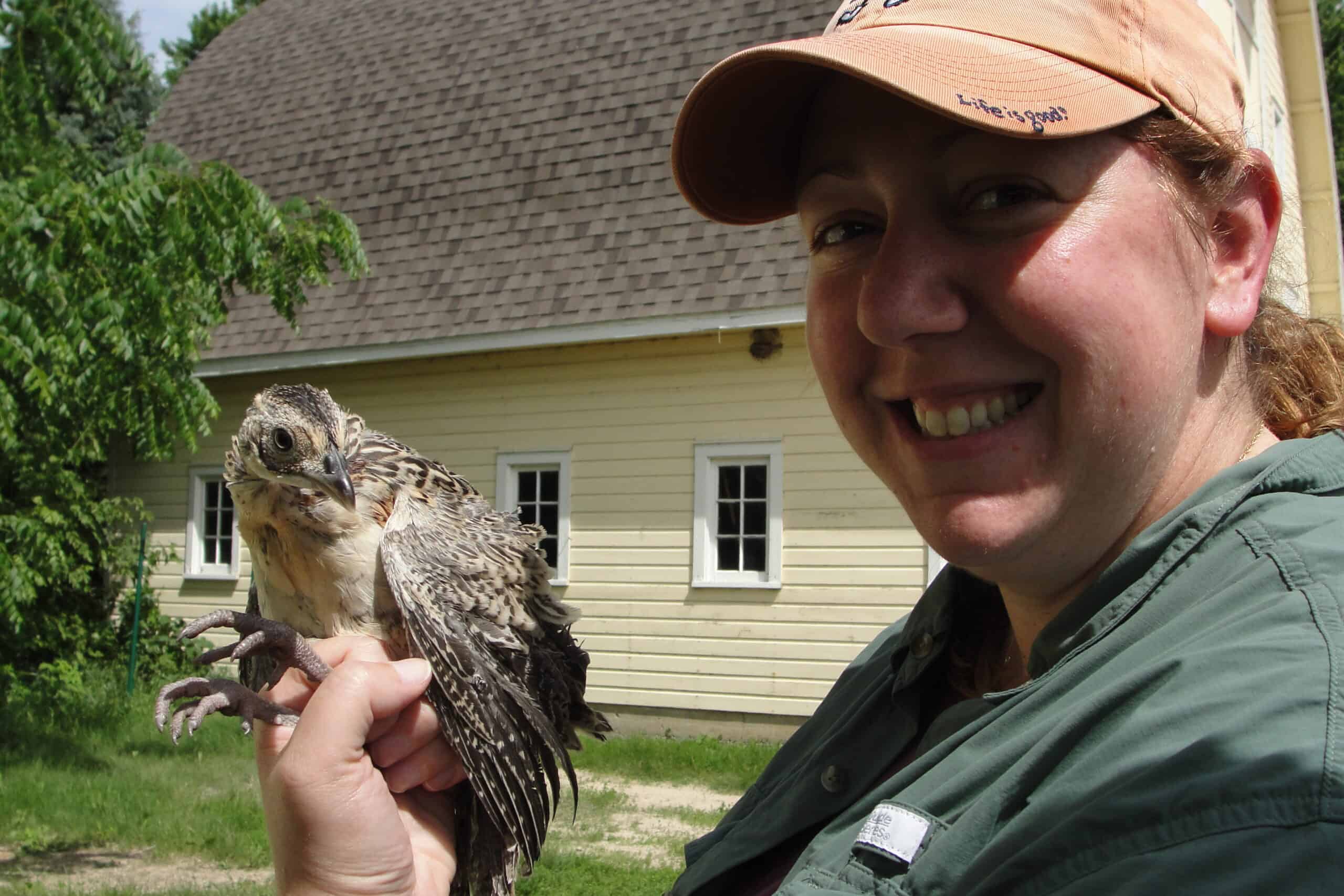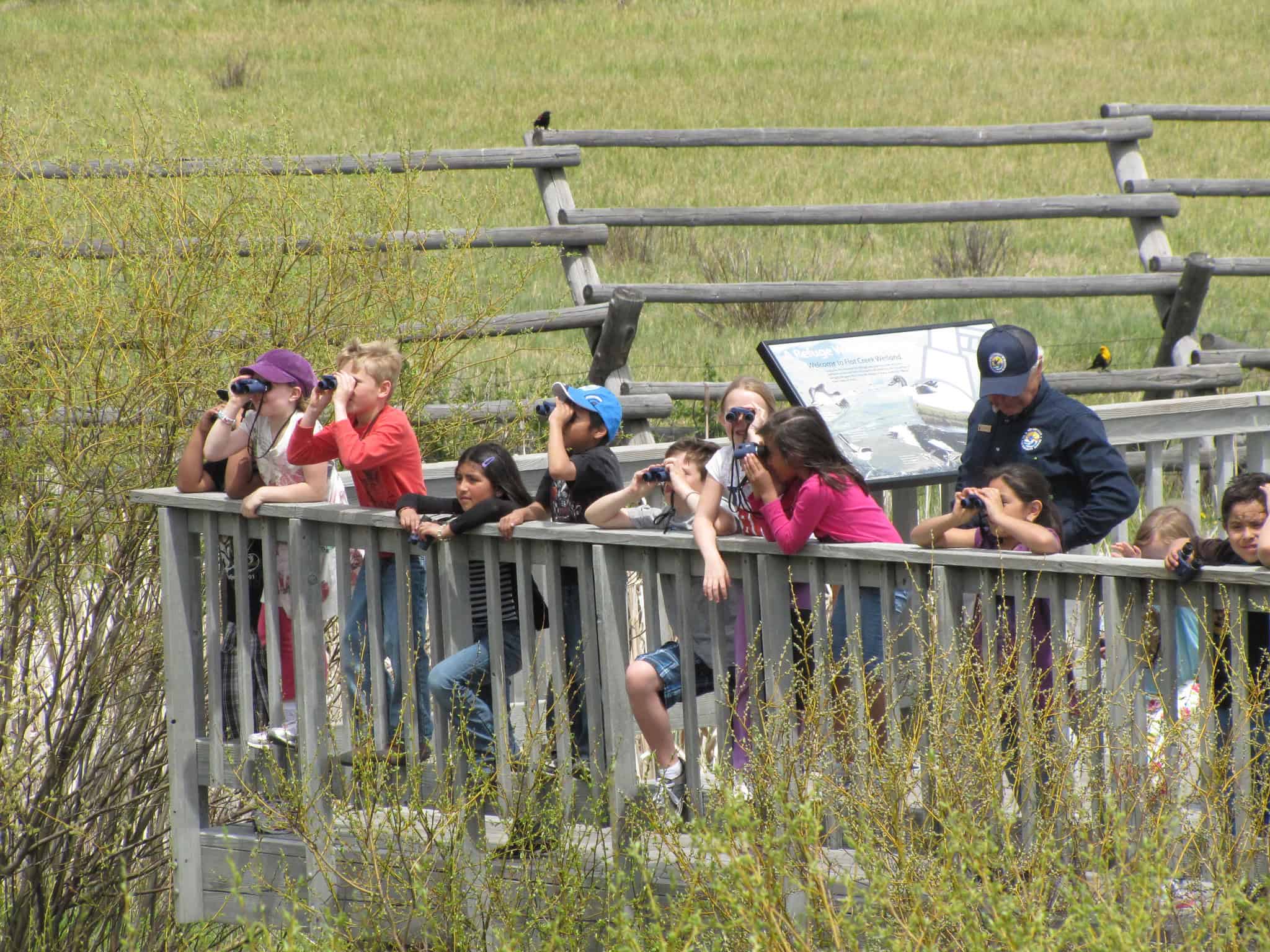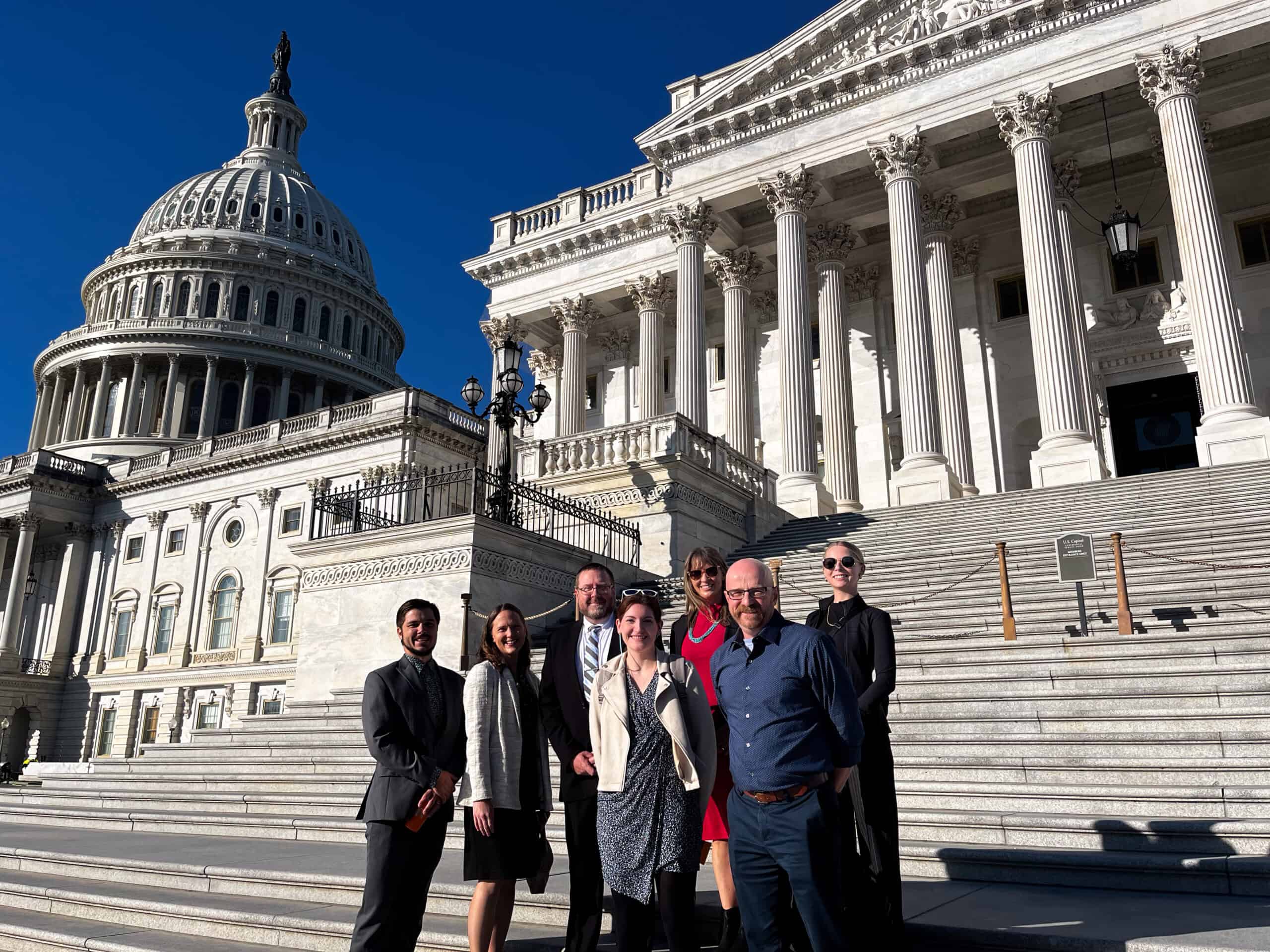Share this article
JWM: Giraffes develop life-long social groups
Female giraffes may eat from the same trees and drink from the same waterholes, but that doesn’t mean they necessarily come from the same social community.
Masai giraffes’ behaviors are kind of like humans that may spend time with people from the other side of town but never speak much to their neighbors.
Researchers recently found that adult female giraffes have complicated social groups of 60 to 90 individuals that stay relatively stable for years.
This new discovery was revealed by a half-decade study, published in the Journal of Wildlife Management, in which researchers followed hundreds of Masai giraffes (Giraffa camelopardalis tippelskirchi) around northern Tanzania taking photos of their unique spot patterns to determine which individuals were most often associating with one another.
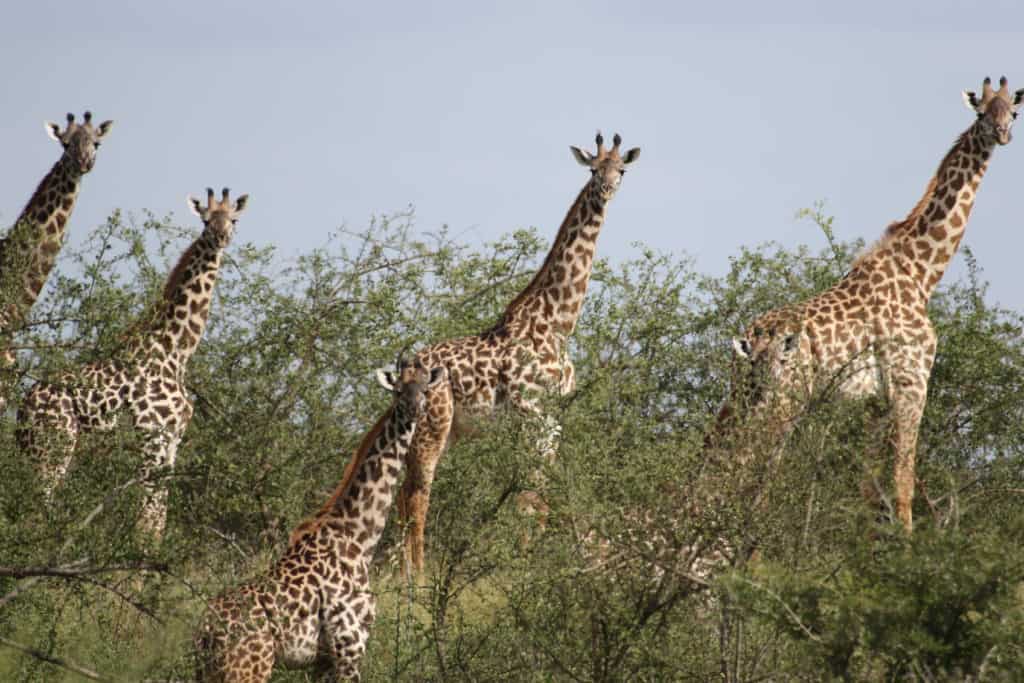
Giraffes that forage near each other aren’t necessarily all from the same community, researchers found. Credit: Derek Lee/Wild Nature Institute
“They have social relationships with each other, and they have these communities,” said TWS member Monica Bond, principal scientist with Wild Nature Institute and a research associate at the University of Zurich and lead author of the study.
Bond and her co-authors conducted the study in an area that included Tarangire National Park, Lake Manyara National Park and some of the area between the parks in Tanzania. From May 2011 to October 2016, the researchers drove around photographing giraffes in the area six times a year. Each survey lasted about 10 days and included about 1,000-1,500 photos.
The team then used a computer program that compared the photos by focusing on giraffe spots that are much like human fingerprints. “Every giraffe has a unique pattern, and we can identify them by that pattern,” Bond said.
After inputting thousands of photos, the algorithms identified about 3,000 individuals.
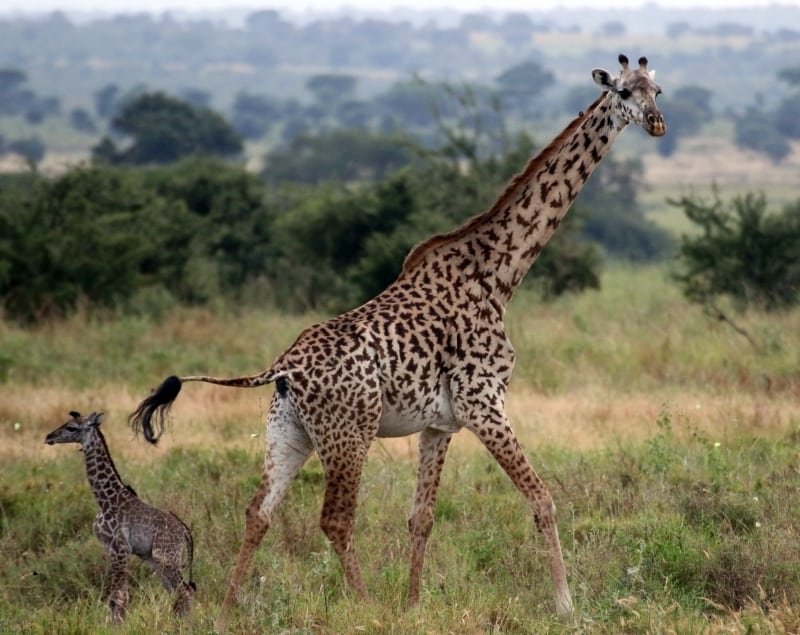
An adult female with a young giraffe. Credit: Derek Lee/Wild Nature Institute
The team was also able to determine which individuals commonly associated with each other. They found evidence of several large giraffe communities that overlapped geographically in the study area — each numbering between 60 and 90 individuals. The researchers determined that these communities are stable over longer periods of time, but not in the short-term. Different individuals often break off and rejoin throughout the year. Communities were mostly made up of adult females, with males wandering between communities more often looking for mates.
But while members of the communities aren’t always together, they associate with each other more than members of other communities.
Further analysis of these communities showed that while adult female survival didn’t differ between giraffe communities, reproductive rates and calf survival did vary.
While it isn’t clear exactly why, some trends in the data showed that the calves of giraffe communities that spent more time outside of the national parks had lower survival rates than those spending more time in the parks.
Other factors might also play a role in the varying survival and reproductive rates, Bond said, such as whether some giraffes dominate better patches of ecosystem, or areas with more cover from predators, than others. But more data would be needed to clarify the specific drivers of demographic variation.
The discovery that giraffes have their own societies has management implications, Bond said. Masai giraffes are considered endangered by the International Union for Conservation of Nature.
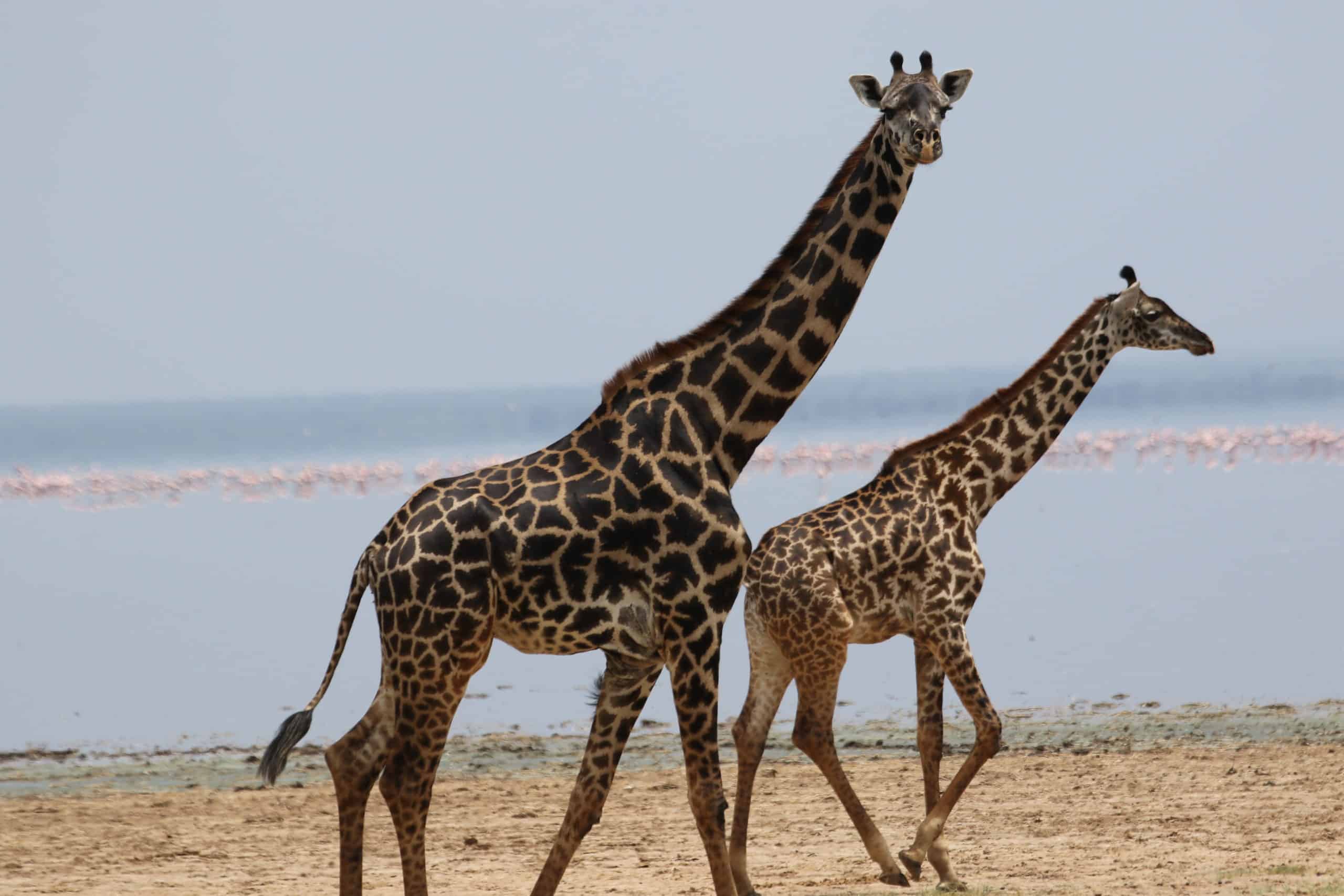
Two giraffes with a herd of flamingos in the background. Credit: Derek Lee/Wild Nature Institute
While most conservationists typically consider giraffes by population, it might be a better strategy to consider individual communities of giraffes when conserving land to have greater conservation success, Bond said.
“We should expand the use of social relationship and social metrics when we’re thinking about management,” she said.
Taking giraffe communities into account when translocating animals is also likely to be important, Bond said, since two giraffes from the same area don’t necessarily mean they associate with each other. Wildlife managers who move giraffes from the same social groups together are likely to see more successful reintroduction projects.
This article features research that was published in a TWS peer-reviewed journal. Individual online access to all TWS journal articles is a benefit of membership. Join TWS now to read the latest in wildlife research.
Header Image: Giraffes have unique spot patterns that help researchers identify individuals. Credit: Sonja Metzger



